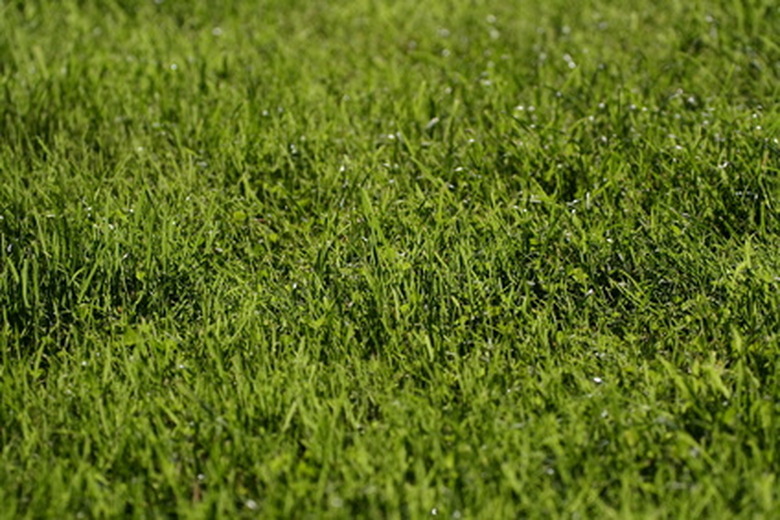How To Grow Grass In Tucson, Arizona
Things Needed
- Shovel
- Rake
- Wheelbarrow
- Fertilizer
- Compost
- Grass seed or sod
In southern Arizona where Tucson is located, the summers are hot and the winters are relatively mild. Many homeowners plant Bermuda grass to grow in the spring and summer, then overseed it with rye grass, which grows well in cooler temperatures. The overseeding takes place in mid-October. Bermuda grass goes dormant in the winter and turns brown. The rye grass germinates quickly and provides homeowners with a beautiful green lawn through late fall and into the winter months. It then dies out when the weather warms in mid-April and the Bermuda grass comes back to life.
Step 1
Select the variety of grass. Choose Bermuda grass for its ability to withstand high temperatures and all day sun. It can easily be grown from seed or the lawn can be sodded. An alternative is zoysia, a slower growing variety that tolerates shade better than Bermuda grass. St. Augustine grass can also do well in shaded yards. Plant rye grass if you want to enjoy the lawn in winter.
- In southern Arizona where Tucson is located, the summers are hot and the winters are relatively mild.
- The rye grass germinates quickly and provides homeowners with a beautiful green lawn through late fall and into the winter months.
Step 2
Turn the soil. Tucson soil can be rocky, too heavily compacted and lacking in nutrients necessary for a healthy lawn. Apply water to the area and then turn the soil several times with a shovel to break up compaction and allow air into the soil. Remove rocks and other debris.
Step 3
Add nutrients. Tucson's natural vegetation does not drop much leaf litter, so there is little organic matter to decay into the soil. Add compost to improve the nutrient quality of the soil. Work it into the soil as it is being turned. Add fertilizer containing the three essential elements for healthy grass: phosphorous, nitrogen and potassium. Tucson's soil is alkaline, so gypsum is often added to counteract the alkalinity.
- Tucson soil can be rocky, too heavily compacted and lacking in nutrients necessary for a healthy lawn.
- Tucson's soil is alkaline, so gypsum is often added to counteract the alkalinity.
Step 4
Level the soil. Rake the surface as level as possible, whether planting seeds or laying sod. If it is not level, water can pool in certain areas and wash the seeds out of position, leading to a patchy looking lawn. Sod planted on an uneven surface will sink down in the lower areas, leaving noticeable depressions.
Step 5
Water frequently the first month. Water seeds and sod for at least 10 minutes, three or four times per day. Do not flood the area. Keeping the seeds moist encourages germination and encourages the sod to take root. Frequent watering is especially critical if planting during the hot, dry Tucson summer.
- Rake the surface as level as possible, whether planting seeds or laying sod.
- Sod planted on an uneven surface will sink down in the lower areas, leaving noticeable depressions.
Tip
Do not rely on the inconsistent summer monsoon rains to meet your lawn's water needs. Twice a week watering is necessary during the hottest months. Work the fertilizer into the soil before planting seeds or laying sod. Do not just apply it to the area's surface. Try not to walk on the lawn after the seeds have sprouted, or right after the sod is put down. Foot traffic is particularly damaging to the tender sprouts of grass seeds.
Warning
If the Tucson, Arizona weather is unseasonably warm when planting the winter grass, keeping the seeds moist is even more critical. Allowing them to dry out will cause the seeds to die, and you will have to spread the seed all over again.
